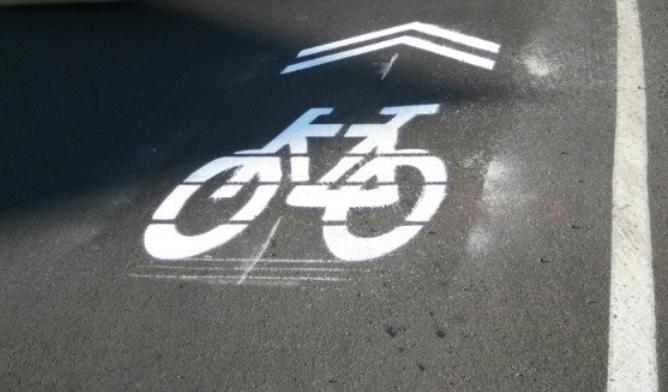
On my post about bike lanes, a reader left a comment asking what I thought about sharrows. So, I gave it some thought. Looking back, I remember seeing sharrows springing up in my area a few years ago. Prior to that time, there were no sharrows, no bike lanes and no signs warning drivers to share the road.
It’s difficult to determine what started a move in the direction of marking roads with symbols depicting the presence of bicycles. The increase in bicycle use, and a strong push for bicycling infrastructure, may have been the impetus for the inclusion of bicycles on American roads.
Cities and towns across America wanted to look as if they were responding to the demand for safer conditions for cyclists. By law, cyclists were entitled to use the roads, but in practice, many roads were too difficult or dangerous to ride on.
To add to the problem, drivers were reluctant to give up an inch of the road to cyclists, who they often saw as impediments to their progress. The result was increased demand from one group and increased resistance from another. This left officials in a quandary. They were obligated to make the roads safe and accessible to cyclists, but they didn’t want to offend drivers by investing in infrastructure which would decrease automotive dominance on the roads.
Their solution was to resort to stamping bicycle tattoos on the surface of the roads. For a relatively low cost, this method made roads appear to be welcoming to cyclists while taking nothing away from drivers. And from a superficial standpoint, it seemed to be a perfect resolution.
Once the bicycle with arrows stamps were plastered along a road, the difficulties began: most drivers, and many cyclists, didn’t know what the symbols meant. Still, one thing was infinitely clear — the symbols created a lot of confusion. Drivers thought that cyclists were required to ride along the path of the sharrows and could not move left into the travel lane. Some of them were livid when bicycles didn’t stay on the marked portion of the road.
Some cyclists weren’t certain whether the sharrows were some sort of bike lane, albeit without the lines. They expected cars to stay away from the sharrows and became angry and discontent when cars drove right over them. Both drivers and cyclists saw the symbols as placing restrictions on where cars and bicycles could drive or ride, even though the opposite was true: sharrows were intended to signify shared lanes.
Another problem with sharrows is their lack of continuity, both in terms of providing interconnected travel for cyclists and visibility. Unlike bike lanes, with their continuous lines, sharrows are painted intermittently. Consequently, shortly after their installation, they get worn away by the flow of traffic, and fade into distant memory as the road returns to its previous state.
As much as politicians and bicycle advocates may want to promote the use of sharrows to encourage sharing the road, they are no replacement for bike lanes, particularly the type that are separated from cars. More than anything else, sharrows are a temporary reminder to share the road. How to accomplish this objective is left up to road users, most of whom have no idea how bicycles and cars are supposed to interact.
Just painting a symbol on the road will not teach drivers to leave three feet of space when passing a bike. It will also not make clear the idea of taking the lane, whereby a cyclist moves into the center of the lane for safety or to make a left-hand turn. And, it will also not make clear who has the right to ride over the sharrow and when. In other words, sharrows leave a lot unclear but express very little clearly.
For now, sharrows will be little more than a symbol of a society’s willingness to appease people at the expense of practicality and a long-term solution. Sharrows are better than nothing. They are a reminder of a bicycle’s place on the road — a placeholder, if you will.
With any luck, this placeholder will eventually be replaced by permanent infrastructure in the form of reserving areas of the road for bicycles. For the time being, cyclists will have to be satisfied with this makeshift accommodation, which does little more for them than assert their rights.
Symbols should never replace specificity. And without clear, universal meaning, there will always be a difference between intent and interpretation.



